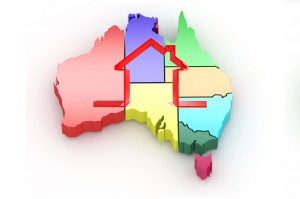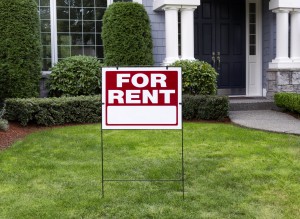The CoreLogic August home value index results for the month confirm a slowdown in housing market conditions in Sydney, while Hobart emerged as the country’s best performing capital city based on growth in dwelling values over the past twelve months.
National dwelling values remained flat during August, with capital city values edging 0.1% higher.
Simultaneously, regional dwelling values slipped 0.2% lower.
This steady result provides further evidence that the housing market has moved through its peak growth phase.

We’re seeing capital gains in markets like Sydney, which were previously very strong, now being weighed down by affordability constraints and tighter lending conditions.
The knock-on effect is a curb in investment credit growth and higher mortgage rates for investment and interest only mortgages. 
Looking at the past three months, it provides a clear indication of the trends, with national dwelling values rising by only half a percent over the three months to August 31 – the lowest rolling quarterly gain since June last year.
The national market moved through a peak rate of growth during the three months ended November 2016, when dwelling values were rising at the rolling quarterly pace of 3.7%.
The slowdown in growth conditions is most visible in Sydney, where housing values had been growing strongly.
Since values started rising in 2012, the typical Sydney dwelling has seen its value rise by 75%, equating to an approximate dollar value gain of $521,000 on the median dwelling valuation.

Sydney’s quarterly growth rate peaked over the three months ending October 2016 when dwelling values jumped by 6.3%.
Since that time, the rolling quarterly rate of appreciation in Sydney dwelling values has consistently eased, reaching the current rate of just 0.3%.
Melbourne more resilient In Melbourne, the housing market has been more resilient to a slowdown.
This is evident in the hedonic index results as well as auction clearance rates, which have consistently been above 70%.
Inventory levels also remain exceptionally tight across the Melbourne market.
Melbourne’s quarterly rate of growth has slowed since peaking at 4.4% in November last year, however the most recent three month period has seen dwelling values rise by 1.9%, less than half the peak rate of growth but substantially higher than Sydney’s pace of capital gains.

Hobart gathering momentum while the trend in capital gains has eased across the largest capital cities, in Hobart the market has gathered some momentum; the annual pace of capital gains, at 13.6%, is now the highest of any capital city. 
The annual growth rate for Hobart hasn’t been this high since 2004.
The sheer affordability of housing is likely one of the key drivers for Hobart’s values appreciation.
With a median house value of just $403,174, Hobart houses are approximately half the value of Melbourne and almost two thirds lower than Sydney house values.
In addition to the strong capital gains, Hobart rental rates have also risen, providing a solid rental yield and pushing the total return well beyond the other capital cities.
The CoreLogic accumulation index, which measures the combined return of capital growth and gross rental yields, is showing a total annual return of 19.5% across Hobart which represents an attractive investment opportunity for savvy buyers.

Perth and Darwin continue to see values fall In Perth and Darwin, housing values have continued to trend lower over the past month and rolling quarter.
However, the annual trend highlights the rate of decline has been easing.
Since peaking in 2014, Perth dwelling values have declined by a total of 10.8%, while the cumulative decline across Darwin has been more severe with values down 18.6% from the market peak.
The silver lining around the decline in values is a substantial improvement in affordability.
Based on a dwelling price to income ratio, Darwin is Australia’s most affordable capital city with a ratio of 4.4.
This means dwelling prices are typically 4.4 times higher than gross household incomes across the city.
Rental yields slipped to a new record low across Australia in August.
Nationally, the gross yield on a dwelling reduced to 3.62% in August, down from 3.87% in August last year.
Record low yields are largely a capital city phenomenon, with yields across the combined regional areas of the country tracking 165 basis points higher than the combined capital city yield. 
While there was a reduction in gross rental yields across each of the capital cities over the past twelve months, only Melbourne (2.9%) and Sydney (3.0%) are recording rental yields at record lows.
To provide some context about why yields are so low in these cities, dwelling values in both cities are up approximately 13% over the past twelve months while rents only increased by 4.7% across Melbourne and 4.0% across Sydney.
The imbalance between rental growth and value growth has been a constant feature of the housing market over the growth cycle to date, however with the pace of capital gains easing at the same time that rents trend higher, the Sydney and Melbourne markets could be approaching the bottom of their yield cycle.
A slowdown in home value growth is likely to be seen as a positive development by policy makers.
Slower growth conditions in Sydney, and to a lesser extent Melbourne, are likely to be a welcome evolution in housing market conditions by policy makers such as the RBA.
So far the trend has been gradual, implying that macroprudential policies are having a flow through effect on housing conditions.

The growth cycle in both cities has run for five and a half years, providing a substantial wealth boost for home owners but also creating much frustration for those who don’t own a home.
Sydney and Melbourne dwelling values have increased by 75% and 56% respectively since the growth cycle commenced in early 2012, however growth rates have been far more moderate across the other capital cities. 
The policy settings around investment credit growth and new interest only settlement targets have seen credit policies tighten and pushed mortgage rates higher for both investor and interest only loans.
These disincentives are likely to continue to weigh down investment demand which will have a more pronounced effect in those markets where investors are most concentrated.
A highlight of the latest housing finance data from the Australian Bureau of Statistics, shows New South Wales as having the heaviest bias towards investment with 58.5% of the value of all housing finance commitments being for investment purposes.
Clearly, tighter credit policies and higher mortgage rates for investors are dampening the Sydney market more than others.
Another contributing factor to slower home value appreciation is the high price of housing relative to incomes, particularly in Sydney.
Affordability barriers are preventing some prospective buyers from participating in the market.
The recent availability of stamp duty concessions in New South Wales and Victoria is likely to provide some support for first time buyers, however it’s not likely that that a rise in first home buyer activity will completely offset the demand gap left by fewer investors.

Overall, the outlook for Australia’s housing market depends on a broad range of factors including local economic and demographic conditions as well as supply factors and credit polices.
However, if the current trends continue, Sydney dwelling values could start to drift lower over coming months.

If the current trends continue, by the end of the year we could see dwelling values across Australia’s two largest housing markets, Sydney and Melbourne, trend lower as they move through their cyclical peaks.
Historically, a negative shift in home values has followed every growth phase, so it’s reasonable to expect a period of moderate value falls following such a sustained period of strong capital gains.
With the Spring selling season about to commence, it will be interesting to monitor the impact of higher inventory levels on the Sydney and Melbourne market.
Particularly so given evidence of slowing growth conditions accompanied by stock levels already being higher than they were a year ago across both cities.
from Property UpdateProperty Update https://propertyupdate.com.au/national-housing-conditions-steady/

No comments:
Post a Comment